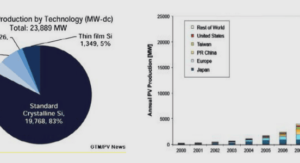Sommaire: Three Essays on Polarization
Introduction
1 Polarization
1.1 Introduction
1.2 Motivation
1.3 Notation
1.4 Income Polarization
1.5 Bi-polarization
1.6 Social polarization
1.7 Socio-economic polarization
1.8 Multidimensional Polarization
1.9 Polarization in Practice
1.10 Conclusion
2 Stochastic dominance in polarization
2.1 Introduction
2.2 Literature
2.3 Principle of stochastic dominance in polarization
2.4 Application
2.5 Conclusion and extensions
3 Comparing the size of the middle class using the alienation component of polarization
3.1 Introduction
3.2 Methodology
3.3 Case of income distributions
3.4 Application
3.5 Estimation and inference
3.6 Conclusion
4 Comparing the homogeneity of income distributions using polarization indices
4.1 Introduction
4.2 Identification in polarization measures
4.3 Stochastic dominance
4.4 Case of income distributions
4.5 Estimation and inference
4.6 Empirical illustration using LIS data
4.7 Conclusion
Conclusion
A Appendix chapter 2
B Appendix chapter 3
C Appendix chapter 4
Bibliography
Extrait du mémoire three Essays on Polarization
Chapter 1: Polarization
1.1 Introduction
This chapter reviews the basic conceptual foundations for the measurement of polarization, the origins of those foundations, how polarization is distinct from inequality and other ways of considering distances and differences across individuals, and how polarization can be measured in an economic, a social and in a hybrid socio-economic perspective. The chapter focuses largely on concepts and measurement, with only cursory overviews both of the empirical polarization literature and of the theoretical polarization/conflict literature.
It is useful to stress at the outset that the term “polarization” means different things to different people. First, there are those people that view polarization as important for ethical reasons and those that consider polarization as instrumental towards generating tensions and conflicts.
Second, there are different ‘types’ of polarization. The chapter distinguishes five such types:
income polarization, income bi-polarization, social polarization, socio-economic polarization and multidimensional polarization. They are listed in Table 1.1 along with their main distinguishing features — how they form groups and how they measure distances. Some of the relevant indices are also listed.
Income polarization
The chapter first discusses income polarization, understood as polarization over the univariate distribution of a cardinal variable of interest. This regards polarization as a clustering of that variable around an arbitrary number of local means. Variables of interest in that context usually measure welfare; income polarization is then polarization over the distribution of a measure of welfare. This measure of welfare is often income, which explains why the term ‘income polarization’ is chosen to denote this class of polarization measures. The variable of interest can also be unrelated to welfare. One can think, for instance, of income polarization over a distribution of political attitudes or over a distribution of geographical locations. As long as these variables have cardinal value, polarization over them will be referred to as income polarization.
The formalization of income polarization has mostly relied in the literature on an identification/alienation framework. Members of the same group identify with each other; members of different groups feel alienation with respect to one another. Income polarization is assumed to be increasing in both aspects: the greater the level of group identification or the greater the level of alienation, the greater the level of polarization.
………..
Mémoire Online: Three Essays on Polarization (1.45 MB) (Rapport PDF)





